A POSTER COLLECTION FROM ALL OVER THE WORLD × CREATED FROM A FUNDRAISING APPEAL FOR ARTHELPS AND MSF—MÉDECINS SANS FRONTIÈRES
CAN POSTERS HELP?
This is a vexing title loaded question. I am going to try to answer it.
Posters have since the nineteenth century served many different social, political, and commercial functions. If you consider social messaging to include politics and health care, among other human rights and services then the answer to the question must be addressed in two parts. Posters are tools of commerce and society—sometimes the two intersect but not always. To the former is the answer: Yes! Posters continue to have a vital place in the consuming culture. They advertise everything from food and fashion to cars and computers— in fact, everything we consume can be introduced for the first time to the public, who as a rule are delighted to see the constantly changing posters on walls, hoardings, and billboards. These commercial posters inform and entertain on themes as broad as art shows, musical concerts, television programs, lifestyle products, and so on. The latter requires a more ambiguous answer.
Posters can also, just as importantly, advocate, protest, caution, and educate a viewer or audience on the such topics as glory or horror of war, the serenity and virtues of peace, the dangers of climate change, the necessity of safe space, the norms of community, the gift of hope, and the value of events that bring individuals together.
Taken as a whole and assuming the design and content of the posters in question meet certain qualifications—grab attention, elicit response, challenge perception and infiltrate the mind of the receiver, then and only then can posters help augment reality. In short, they do help in a variety of mnemonic ways.
Not all posters function at the same level of useful intensity. Self-indulgent design can be a liability. Over-stylized imagery can dilute a message. Yet legibility and readability (two different attributes sometimes linked together as one) are not, however, always the requisite for effective social posters. Often the surprising visual impact of an abstraction is more motivational than a simple realistic representation; chaos can be more
relevant than a pristine work of fine design. The designer’s emotional response to an issue—whether it is the Ukraine war with Russia or containing the pandemic can, and are, designed in differently—sometimes counter intuitively—in unmodulated ways.
Can posters help? There is much that is positive to be said about static representation. As a culture there is a greater expectation of movement, of motion, of change. Time for contemplation has been reduced exponentially as our computers and devices become more powerful; and especially as artificial intelligence revs up the speed in which design can and is accomplished. Posters, even those that are designed on and for the screen, are essentially lasting. Sure, they can be animated if the designer so chooses, but they can also be printed out and hung on surfaces or sent through snail mail (just like it was done Before Computer [BC] era). The benefit of the semi-but-not-entirely-hybrid poster (those that are made for and reside on Internet sites or found on apps) is that how they are used is a choice—an agreement between the designer and the client (if there is one) and the viewer (or user). This makes posters helping more economical and efficacious.
The former means the latter is inescapable. Posters for social (including among other issues, gender, and sexuality), political (including issues rights, law, and freedom in general), and any personal concerns (whatever they may be at any given time and place) and most are represented in this publication, can be accomplished as quick as the creative (or polemic) mind can conceive them, produced and distributed in large numbers through a specific locale or countries around the world.
The golden age of the poster has long been considered the pioneering turn of the century, then the modern mid-twentieth century, then the psychedelic sixties, and so on through the decades, in Europe, the U.S., and Asia. Today is another golden age. It is the digital golden age. Can posters help? They still help? They will help issues, causes, and most important they help people be aware of the world in its present state.
STEVEN HELLER
AGAINST WAR P 6
PEACE P 52
LET’S FIGHT P 80
PERCEPTION P 94
EUROPE P 102
CLIMATE CHANGE P 110
OUR FUTURE P 128
HOPE P 136
SAFE SPACE P 146
COMMUNITY P 162
EVENTS P 186
PLAYGROUND P 194
INDEX P 234
POSTER REX P 242



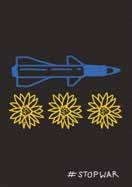











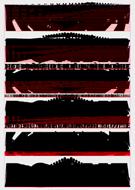

























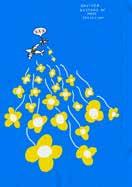








































UND ICH DACHTE IRGENDWIE IN EUROPA STIRBT MAN NIE




MY HEART IS A CHILD

















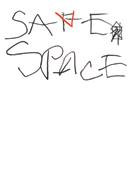






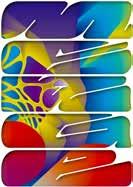


































































Néo
João Augusto – PRT I: @q.u.e.i.r.o.s
Jonas Bader – DEU
I: @j.jonasbader
Laura Böttcher – DEU design.haw-hamburg.de
Peter Bankov – CZE bankovposters.com
Patrice Barnabé – FRA zaina.international
Ivana Baumann – DEU fh-aachen.de/fachbereiche/ gestaltung
Merit Bendler – DEU design.haw-hamburg.de
Kai Bergmann – DEU bergmannstudios.com
463 P187
206 P91
025 P14
470 P187
655 P229
640 P222
239, P98 517 P196 467 P187 472, 478, 479 P189 482, 484 P190 496 P193 518 P196 589 P212
Nicola Bernasconi – CHE hkb.bfh.ch/de/studium/ bachelor/visuelle-kommunikation
634 P222
Lukas Baars – DEU fh-aachen.de/ fachbereiche/gestaltung
Manon Babey – CHE hkb.bfh.ch/de/studium/ bachelor/visuelle-kommunikation
605 P216
440 P180
P43 338 P146
Jen Dodaro – USA jendodaro.info 096 P44 262 P114
Arjan Doeleman – NLD I: @arjandoeleman 154 P71
Lidia Donis – DEU I: @lidia_donis
280 P122 582, 583, 586, 590, P212
Nadia de Donno – CHE yoma-design.ch 434, 435, 437, 439 P180 442 P181
Henry Becker – USA I: @henryjbecker 451 P183
Laura Drews – DEU

POSTER REX IN KYIV

IN SUMMER 2017, LARS HARMSEN AND MARKUS LANGE WENT ON TOUR AND PRINTED SILKSCREEN POSTERS WITH ARTISTS FROM POLAND, WORKING WITH LOCAL ARTISTS IN ATHENS, ISTANBUL, MOSCOW, AND KYIV. IN KYIV, THEY PRINTED IN THE IZONE WORKSHOP TOGETHER WITH OLGA TERESHCHENKO, JAKUB STEPIEŃ, AND ANTON BUKOROS. THE RUSSO-UKRAINIAN WAR HAS BEEN ONGOING BETWEEN RUSSIA (ALONGSIDE RUSSIAN SEPARATISTS IN UKRAINE) AND UKRAINE SINCE FEBRUARY 2014. RUSSIA ANNEXED CRIMEA FROM UKRAINE AND SUPPORTED PRO-RUSSIAN SEPARATISTS IN THE WAR IN DONBAS AGAINST UKRAINIAN GOVERNMENT FORCES. IN FEBRUARY 2022, RUSSIA OFFICIALLY RECOGNIZED THE DONETSK PEOPLE’S REPUBLIC AND THE LUHANSK PEOPLE’S REPUBLIC AS INDEPENDENT STATES. PUTIN ANNOUNCED A “SPECIAL MILITARY OPERATION” IN UKRAINE, MARKING THE START OF A FULL-SCALE INVASION OF UKRAINE. TODAY, THE POSTERS FROM 2017 HAVE AN EVEN MORE EXPLOSIVE MEANING AGAINST THE BACKDROP OF RECENT EVENTS.
POSTER REX WAS FOUNDED IN 2014 BY THE GRAPHIC DESIGNERS LARS HARMSEN (MUNICH) AND MARKUS LANGE (CAIRO). FOR EACH SESSION, THEY INVITE AN ARTIST TO CREATE UNIQUE POSTERS, PRODUCED IN DIFFERENT SILKSCREEN WORKSHOPS AROUND THE GLOBE. ALL POSTERS ARE SILKSCREEN PRINTED BY HAND OR WITH OTHER DIGITAL OR ANALOG TECHNIQUES. EACH SESSION HAS ITS OWN TOPIC. POSTER REX ALSO OFFERS WORKSHOPS FOR STUDENTS. BY NOW, THE COLLECTION COUNTS OVER 2,000 UNIQUE POSTERS.
OLGA TERESHCHENKO
Where are you living right now? Did you have to leave your home because of the war?
OA No, I haven’t left my home because of the war, I am still in Kyiv. My husband is here, so I stayed with him.
What role does social media play since the war broke out in Ukraine? To what extent has the use of these tools changed for you?
OA In my opinion, social media is an easy way to share information and connect with people, helping and staying together even if you are in different parts of the world. I understand the importance now, especially in times of Coronavirus and the war in Ukraine. Now I am checking my social media to get more information on current war news. I try to follow only official news pages and share information that is important to me. Also, I try to limit my time seeing the news, because often it is difficult to digest it mentally and I have to live my real life in the here and now. So, using social media is one of the ways for me to stay in touch with people who are important to me in my life.
Looking at the posters from our session together, what do you think about them today?
OA I think it was a great time and a powerful point in my life and my creativity. For me the symbolism of the project was strong, first of all, it is our connection. We worked together, exchanged our talents, experiences, ideas, and finally created sophisticated multilevel, and an energetic work. Not only our posters were important, but the process was even more significant to me. It is a story about friendship, trust, and opening boundaries. Our posters couldn’t be more powerful! Our shared experience had and still has a huge impact on me and my life—such a great memory!
What do you think about the power of posters or graphic design in general to make the world a better place? Utopia?
OA I think it is not a Utopia, if even one person in the world believes that graphic design can make the world better, then it makes sense. For me, designing posters is one of the ways to express your feelings. It is art and it has the power to help—first of all its creator, the author of the creation. The poster can be the channel to say something out loud or, in case you have no words, to describe them. I think, a poster can be a powerful instrument to be honest about your feelings, emotions, your position, and your point of view. It is your voice on paper.
What is the role of the graphic sheet and its message? In times of social media, isn’t it more important to explain connections?


OA In my eyes, the main role of graphic sheets is to tell a story. It can be your personal story or your client’s story that you are trying to tell society in a best visual way. I think visual communication combines different levels but it is always the instrument. I am personally up to the idea of freedom in your self expression and in the stories you tell through design.
How much has your life changed since the war? Do you still work as a designer?
OA Yes, my life has changed completely since the war started. I still work as a graphic designer but most current projects I am working on are more dedicated to the war, safety, and medicine in Ukraine. Also I take care of my health more than ever.
What did your life look like in 2017 when we were in Kyiv, what does it look now and what do you hope for the future?
OA In 2017 my life was different, I just arrived from my scholarship program Gaude Polonia from Warsaw, after half a year living there. It was a very inspiring and growing time for me, time for my huge art and design progress. And when I finally came back to Kyiv we created a super cool project together with Poster REX. It was a new experience in my career. Together we created very powerful and exclusive works of art, I guess. Also as a process, it was exchanging knowledge, energy, ideas, and just a warm and magical time. Now it looks like a part of my history and we still communicate. So, I think it was the start of a good friendship.
Now there is a war in Ukraine and we are living in hard, unstable times. I try to make more of what I love, what I need, and what interests me now. And to not waste my time doing something that doesn’t make sense to me. It is not always easy, but I try to make it real. Try to realize my dreams and my creative potential. The war somehow helps me to understand that there will be no better time to do things I love than now. Of course, I have my plans and dreams about the future and make all I can to reach it. I believe, more than anything, that my best future is now—and to live it as foolishly as I can.
“A POSTER CAN BE A POWERFUL INSTRUMENT TO BE HONEST ABOUT YOUR FEELINGS, EMOTIONS, YOUR POSITION, AND YOUR POINT OF VIEW. IT IS YOUR VOICE ON PAPER.”






IMPRINT & THANKS
Slanted Publishers UG (haftungsbeschränkt)
Nördliche Uferstraße 4–6 76189 Karlsruhe Germany
T +49 (0) 721 85148268 info@slanted.de slanted.de
@slanted_publishers
COPYRIGHT
© Slanted Publishers, 2023
Nördliche Uferstraße 4–6, 76189 Karlsruhe Germany
All rights reserved.
ISBN: 978-3-948440-43-5
1st edition 2023
TEAM
Publishing Direction: Lars Harmsen, Julia Kahl
Creative Direction: Lars Harmsen
Managing Editor: Vicky Blake
Assistant Editor: Juliane Nöst
Art Direction: Viola Dessin
Graphic Design & Final Artwork: Juliane Nöst
Proofreading: Lies Wolf
PRINTING & BOOKBINDING:
KOPA, Kauno / Lithuania
kopa.eu
FONTS
ES Nein, 2020
Extraset, extraset.ch
Suisse Int’l / Neue, 2011
Swiss Typefaces, swisstypefaces.com
DISCLAIMER
The publisher assumes no responsibility for the accuracy of all information. Publisher and editor assume that material that was made available for publishing, is free of third party rights. Reproduction and storage require the per mission of the publisher. Photos and texts are welcome, but there is no liability. Signed contributions do not necessarily represent the opinion of the publisher or the editor.
The German National Library lists this publication in the German National Bibliography; detailed bibliographic data is available on the Internet at dnb.d-nb.de.
DONATIONS
€ 6,687.41 have been donated so far and will support projects from our partners
ARTHELPS: arthelps.de (€ 2,990.21)
MSF—Médecins Sans Frontières: msf.org (€ 3,697.20)
THANKS
We would like to thank all 434 participants who have contributed to this publication and by this supporting ARTHELPS and MSF—Médecins Sans Frontières.
A special thanks to those who have worked for this charity project cheaper or even volunteered their efforts: Jack Dignam, who found the right words for the announcement of the project and the call for submissions. Florian in der Beek & Andreas Bayer (TecBits) who realized the website and submission tool. Viola Dessin, who wonderfully designed the key visual and the basic structure of the book. Vicky Blake, who worked devotedly to contact a lot of people around the world to get them excited about the project.
Steven Heller for the wonderful foreword.
Markus Lange for putting together the PosterRex posters. Olga Tereshchenko, Jakub Stepień, and Anton Bukoros from Ukraine for the touching interviews.
ABOUT
Slanted Publishers is an internationally active independent publishing and media house, founded in 2014 by Lars Harmsen and Julia Kahl. They publish the award-winning print magazine Slanted, which twice a year focuses on international design and culture. The Slanted blog www.slanted.de and social media have been publishing daily news and events from the international design scene and presenting inspiring portfolios from around the world for 18 years. In addition to the Slanted blog and magazine, Slanted Publishers initiates and creates projects such as the Yearbook of Type, tear-off calendars Typodarium and Photodarium, and others. Slanted’s publishing program reflects their own diverse interests, focusing on contemporary design and culture, working closely with editors and authors to produce outstanding publications with meaningful content and high quality. These publications can be found in the Slanted Shop alongside other extraordinary products by young design talents and established producers from all over the world. Slanted was born from great passion and has made a name for itself across the globe. Its design is vibrant and inspiring its philosophy open-minded, tolerant, and curious.
GLOBAL DRAMAS CAN LEAD US TO QUESTION OUR OWN CREDIBILITY AND THE SIGNIFICANCE OF OUR OWN LIVES AND / OR ACTIONS. RECENT EVENTS IN UKRAINE HAVE LED US, THE SLANTED TEAM, TO ASK WHAT OUR WORK IS REALLY FOR? CAN WE ACCELERATE THE TRANSITION TO A SUSTAINABLE, FAIR, AND JUST SOCIETY THROUGH THE POWER OF DESIGN? WITH A GLOBAL CALL, WE INVITED THE DESIGN COMMUNITY TO CONTRIBUTE WITH A PIECE OF WORK AND A DONATION. 434 PEOPLE FROM ALL OVER THE WORLD PARTICIPATED IN THIS PROJECT AND ALMOST 700 POSTERS WERE SUBMITTED. ALL THE PROCEEDS HAVE BEEN DONATED TO TWO SELECTED ORGANIZATIONS THAT WE APPRECIATE FOR THEIR WORK: ARTHELPS AND MSF—MÉDECINS SANS FRONTIÈRES. WE BELIEVE IN THE PROBLEM-SOLVING POWER OF DESIGN. WE WANT TO WORK EVERY DAY TOWARDS A VISION OF THE WORLD THAT IS SUSTAINABLE, INCLUSIVE, EQUITABLE, AND SAFE. THIS BOOK IS AN EFFORT TO BRING THE GLOBAL CREATIVE COMMUNITY TOGETHER TO TAKE A SMALL BUT VALUABLE STEP TOWARDS SOLVING THE BIG PROBLEMS OF OUR TIME.

